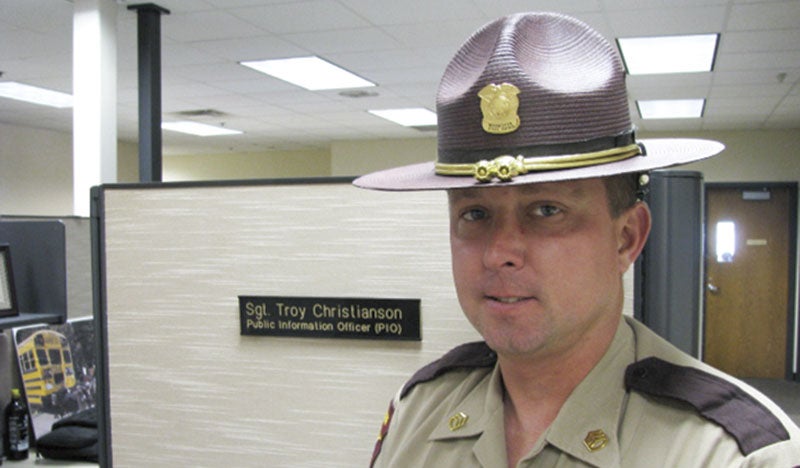Ask a Trooper: Documentation required for tint below 50 percent
Published 8:25 am Wednesday, May 9, 2018

- Sgt. Troy Christianson, Ask a Trooper Minnesota State Patrol
Question: Would law enforcement give me a citation if I have a prescription, from my eye doctor, saying that I get migraine headaches from intense lighting and my truck windows can be tinted to 20 percent on driver and passenger windows, for no more than two years?
Answer: Drivers must be in possession of a prescription or document from their doctor regarding the medical need to have tinted windows below the 50 percent light transmittance, plus or minus 3 percent. If they don’t have the required documentation with them, a law enforcement officer may issue a citation.
The document must state the minimum percentage of light transmittance that would satisfy the patient’s prescription or medical needs. The document must also contain an expiration date that is no more than two years after the prescription or statement was issued.
If the window tint is below the state minimum of 50 percent light transmittance, a law enforcement officer may stop the vehicle since the officer will not be aware of the medical exemption.
In Minnesota, you can have your windows tinted to a light transmittance of 50 percent but not less. Light transmittance is the amount of light that is required to pass through both the window and the tint film. Vehicles come from the factory with tint already inside the glass material. No window comes from the factory at 100 percent light transmittance. My experience has been that most vehicles are already at 75 percent before any modifications.
Below is a summary of Minnesota’s window tint law:
No vehicle can have any tint to the front windshield.
Passenger cars are limited to 50 percent on all side and rear windows.
Pickups, vans and SUV’s are limited to 50 percent on the front side windows.
Pickups, vans and SUV’s are not limited on the rear side and rear windows. It can be less than 50 percent behind the front seat.
Squad cars, limousines and vehicles used to transport human remains by a funeral establishment are not limited on the side and rear windows.
Most troopers have window tint meters in their patrol cars and will test the windows for the legal percent of light transmittance if they look to be below the statutory limit. If they are found below the legal limit, the trooper will issue a citation or warning. Prior contact data is stored in our Minnesota State Patrol computer system, and if the vehicle is stopped again, the trooper will be able to read what that vehicle was stopped for, driver and passenger information, if a citation or warning was issued and any comments entered from the previous trooper(s).
You can avoid a ticket — and a crash — if you simply buckle up, drive at safe speeds, pay attention and always drive sober. Help us drive Minnesota Toward Zero Deaths.


